REEL RETRO CINEMA: The Harryhausen classic was released in America five decades ago!

—
UPDATED 4/20/24: The Golden Voyage of Sinbad was released in the U.S. 50 years ago this month, on April 5, 1974! Perfect time to “reprint” this piece from 2016! Dig it! — Dan
—
OK, so there’s a special reason Rob Kelly’s latest REEL RETRO CINEMA column is focused on this Sunday-matinee staple.
See, over the last year or so, ever since Sir Christopher Lee died, he and Caroline Munro have become minor obsessions of mine. It’s because I’m convinced that the two of them should have been Ra’s al Ghul and Talia in a ’70s Batman movie that should have been made but wasn’t. (Read about that here.)
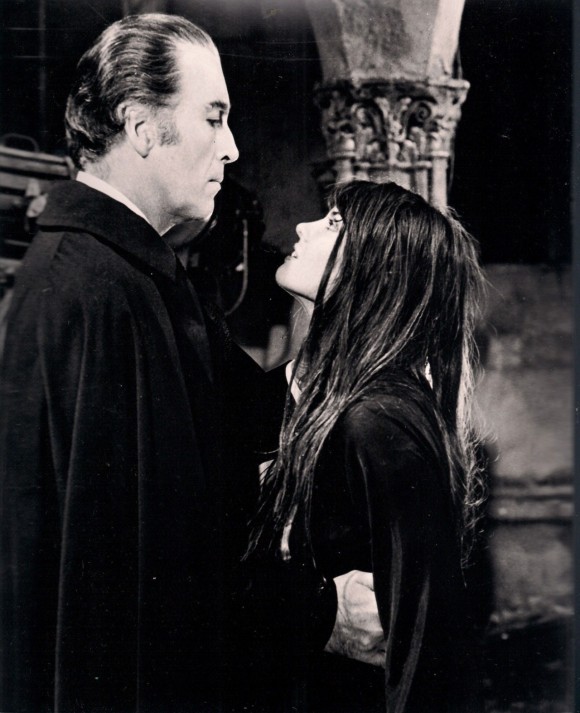
Lee and Munro in Dracula A.D. 1972
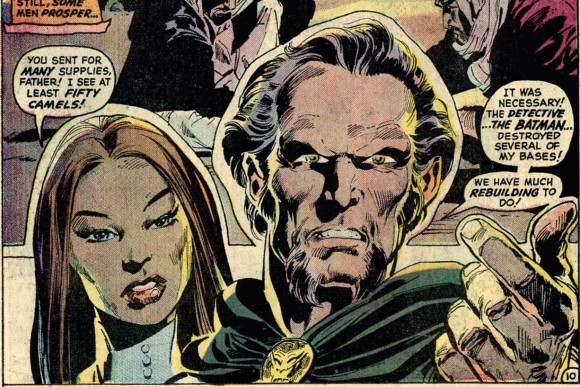
From Batman #244
This is an idea that goes back to childhood. (Read about that here.)
Anyway, we’re right now in the thick of NEAL ADAMS MONTH (again, click here) in which the legendary artist provides us with daily commentary on every variant cover he’s done for DC in February, each one based on one of his Bronze or Silver Age classics.
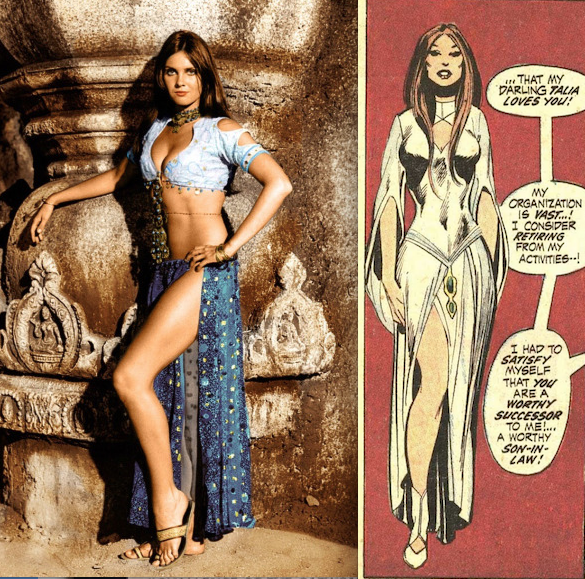
Caroline Munro on the left. Talia (from Batman #232) on the right.
But during our lengthy discussions, I made sure to ask him about the Lee-Munro idea — and he was really into it. (You can read about that here.)
So the timing seemed right to revisit The Golden Voyage of Sinbad in all its Munrovian glory… — Dan
—
By ROB KELLY
“Trust in Allah, but tie up your camel.”
1973’s “The Golden Voyage of Sinbad” was producer Charles H. Schneer and Ray Harryhausen’s second Sinbad film, following 1958’s The 7th Voyage of Sinbad. This time around, John Phillip Law (Diabolik himself!) plays the world-traveling, sword-wielding adventurer. Let’s set sail!
Directed by Gordon Hessler (who helmed many fine films, plus KISS Meets The Phantom of the Park), the movie opens aboard Sinbad’s ship as it cruises the high seas. A small winged homunculus flies above, dropping a golden tablet. Sinbad wears it around his neck, and that night has a strange vision of a mysterious woman with an eye tattooed on her hand. A strange storm blows the ship off course, and Sinbad and his crew find themselves at a coastal town in the country of Marabia.

While on land, Sinbad is accosted by a stranger in black who demands the tablet, showing off his sword for emphasis. Sinbad refuses, escaping to the city. There he meets a strange man in an iron mask named the Grand Vizier (Douglas Wilmer), who informs Sinbad that the tablet is just a third of a larger puzzle, and the Vizier has another. Legend has it that if all three pieces of the tablet are put together, they point to a “Fountain of Destiny,” which will bestow its finder with “youth, a shield of darkness, and untold riches.” Good deal!
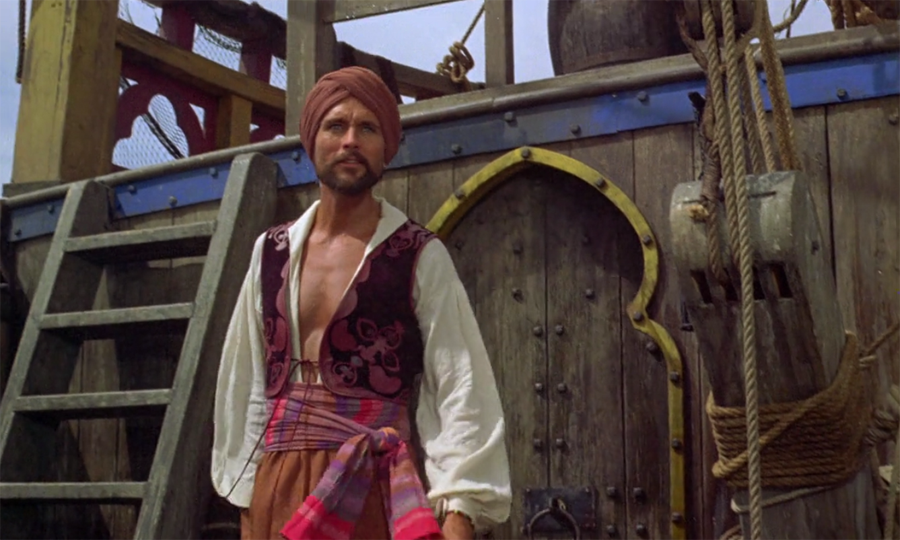
We soon learn the mysterious man in black is Prince Koura (a pre-Dr. Who Tom Baker), who burned the Vizier so badly that it left him disfigured and hidden behind the mask, and is also the creator of the homunculus. Koura uses his “pet” to spy on Sinbad and his friends, and follow them as they search for the Fountain. Along the way, Sinbad meets the girl he saw in his dream, a slave named Margiana (Caroline Munro). She gets to go with Sinbad in exchange for taking along her slave master’s hippie lazy son Haroun, who is sent away so he can learn to be a man.
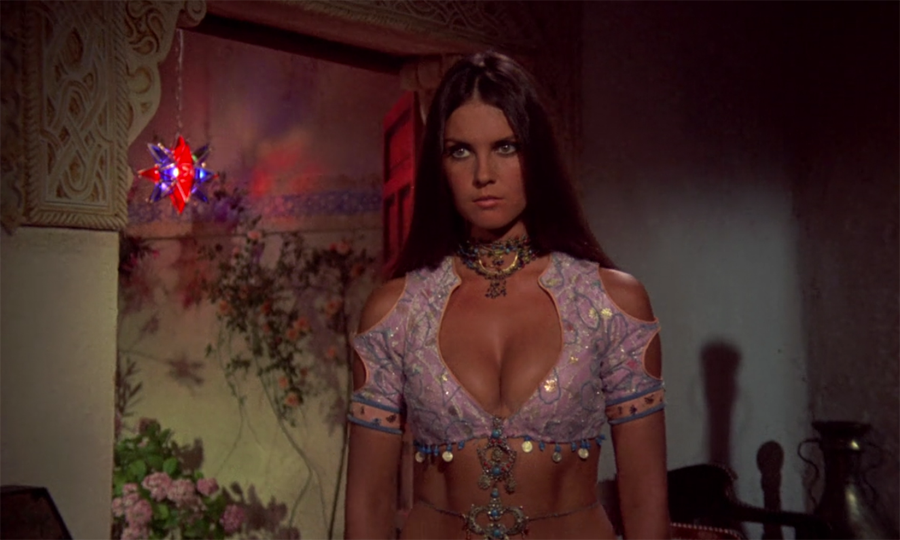
Prince Koura tries to use black magic several times to kill Sinbad, aging himself precipitously in the process. He (via Harryhausen’s trademark “Dynarama” SFX) animates the wooden siren on the bow of Sinbad’s ship, which almost kills Haroun. The siren steals a valuable map, which points to where the fountain is, the lost continent of Lemuria. Koura arrives there ahead of Sinbad and the gang, and overhears them get advice from the strange being known as the Oracle of All Knowledge (a heavily disguised Robert Shaw—yes, Quint from Jaws) as to the dangers that lie ahead.
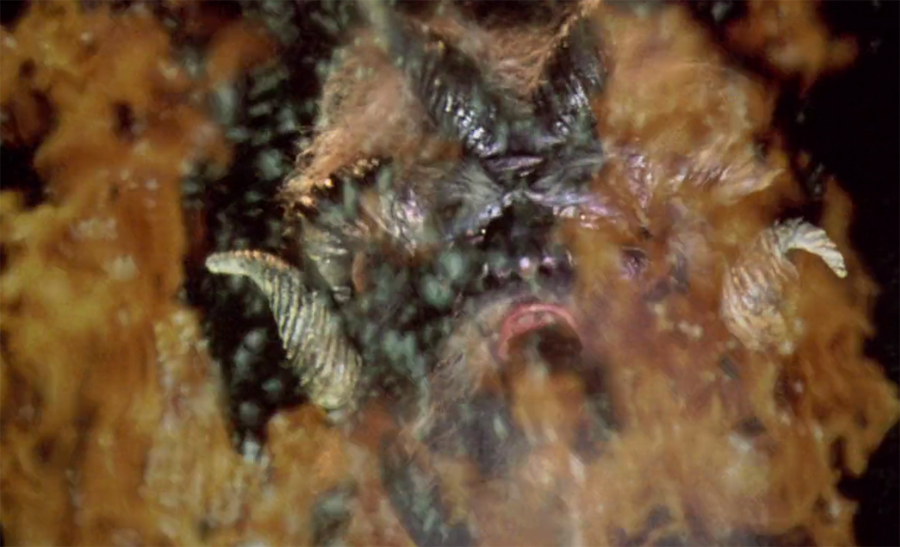
The adventure culminates in a cave that contains a small band of green-skinned natives. They capture Koura but he is freed when he puts the whammy on a six-armed Kali idol that the natives worship. Kali then attacks Sinbad, who defeats it, despite being out-armed in more ways than one. The natives then grab Margiana and use her as a sacrifice to the one-eyed centaur that lives in the recesses of the cave. Vizier scares the natives by showing them his face (a truly horrible visage — sorry, man), and they rescue Margiana. The other creature that lives in the cave, a griffin, attacks the centaur. Koura helps the centaur win via his magic, and then its up to Sinbad to kill the centaur.
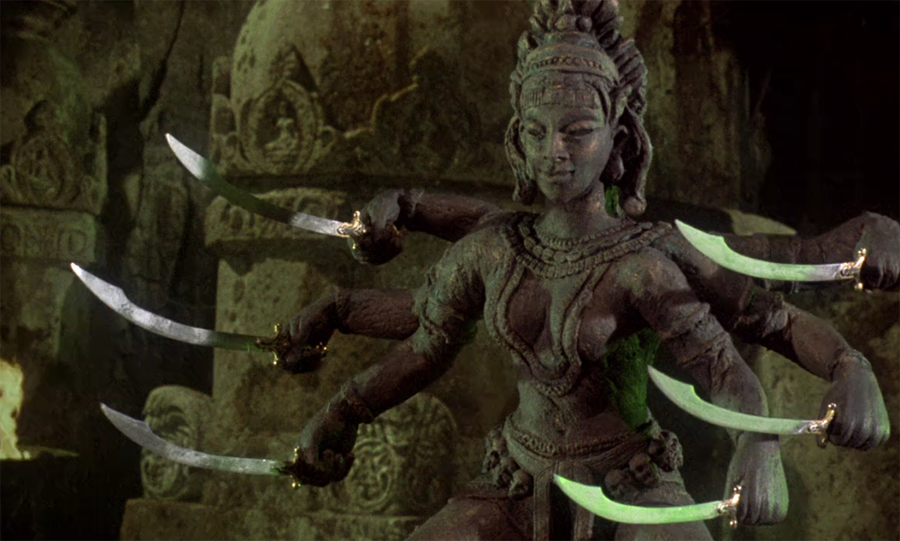
Koura grabs two of the tablet pieces and drops them into the Fountain, giving him youth and invisibility. He gets into a swordfight with Sinbad, but loses when he allows his form to be seen through the water. The Fountain then offers Sinbad the “crown of untold riches,” which he selflessly gives to the Vizier. The crown’s magic heals the Vizier’s face, and the whole crew climbs back onto Sinbad’s ship. The Vizier is healed, Haroun has become a man, and Sinbad and Margiana are in love. The End!
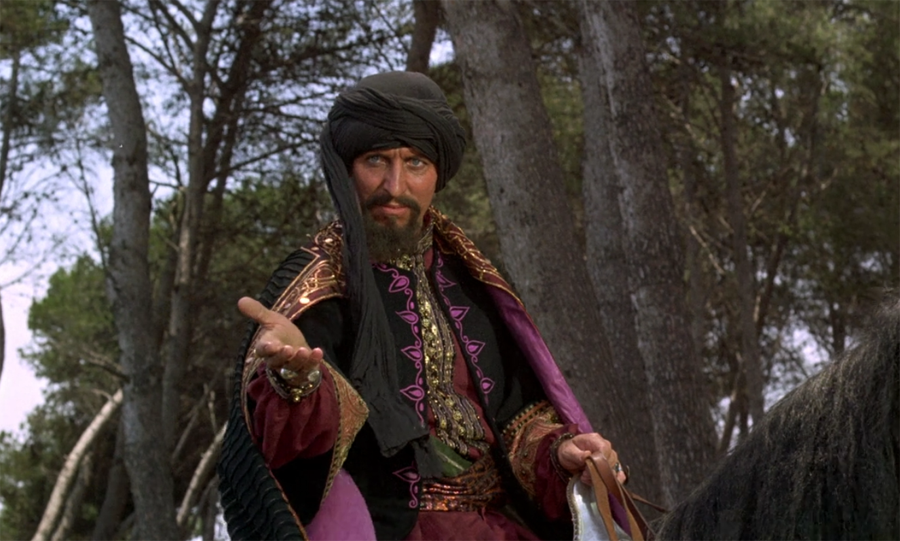
I saw The Golden Voyage of Sinbad — and its 1977 sequel, Sinbad and the Eye of the Tiger — in the theater during their original releases, and I remembered enjoying the heck out of them. For whatever reason, I never really got around to watching them again over the intervening decades, so when 13th Dimension editor Dan Greenfield asked me to review Golden Voyage, I was up for it, but a little nervous. Would it live up to my fond childhood memories or be a terrible bore?
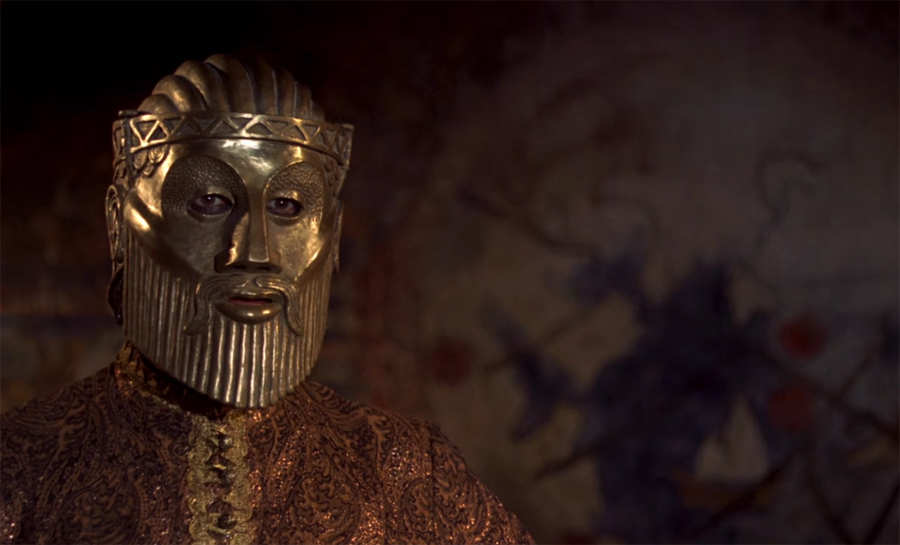
Luckily, I found that Golden Voyage of Sinbad not only lived up to my memories, but actually sort of exceeded them. Director Hessler wastes no time giving the audience what it came for—within the first 10 minutes we’re introduced to the flying homunculus (one of Harryhausen’s best creations) and Caroline Munro (one of Mother Nature’s best creations) and the plot is already under way.
The film’s color palette is simply gorgeous, with its comic book-y reds, blues, yellows, and greens popping off the screen. The scene with the Oracle of All Knowledge is memorably weird (even more so when you realize it’s Big Time Movie Star Robert Shaw under there who, according to legend, wanted to play Sinbad so bad that he took this cameo just to be in the movie). Tom Baker digs into his role as Prince Koura with relish; he’s simultaneously a classic black-hatted bad guy, but also comes with a compelling set of character motivations.
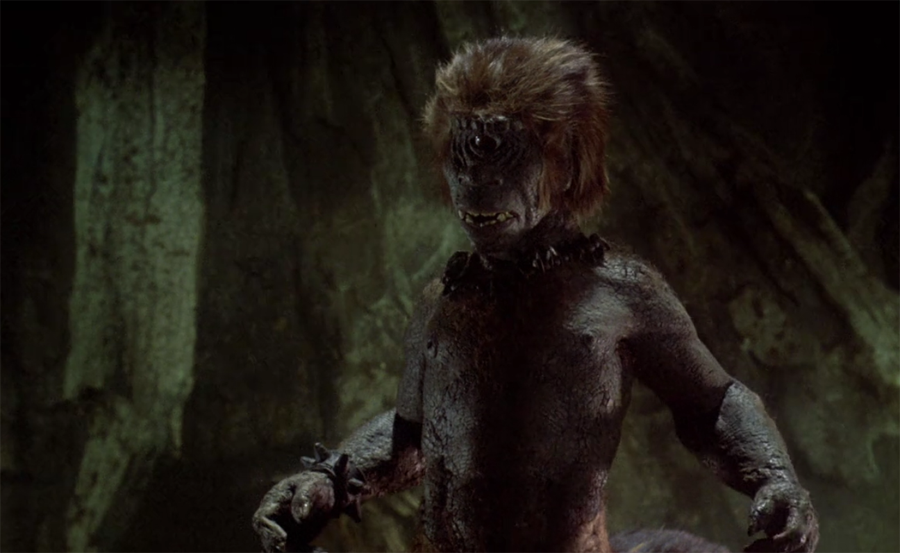
As I mentioned up top, John Phillip Law makes a terrific Sinbad–that lusty gleam in his eye lets you know he’s enjoying every bit of this adventure he’s on. Law’s Sinbad is also a stand-up guy—once the slave master hands Margiana off to Sinbad, she assumes that she is now Sinbad’s slave. He tells her that, no, she is no longer anyone’s slave. This scene has a great bit where it seems like Sinbad orders Margiana to get him a drink, only to have him pop back in and say, with a grin, “please.”

Considering how much this film is like a comic book, and that we’re covering it here in the first place, it should come as no surprise that there is a four-color adaptation. Marvel published The Golden Voyage of Sinbad across two issues of their Worlds Unknown series, written by Len Wein and drawn by George Tuska and Vince Colletta. It manages to hit most of the action beats, minus the big donnybrook between the griffin and the centaur.
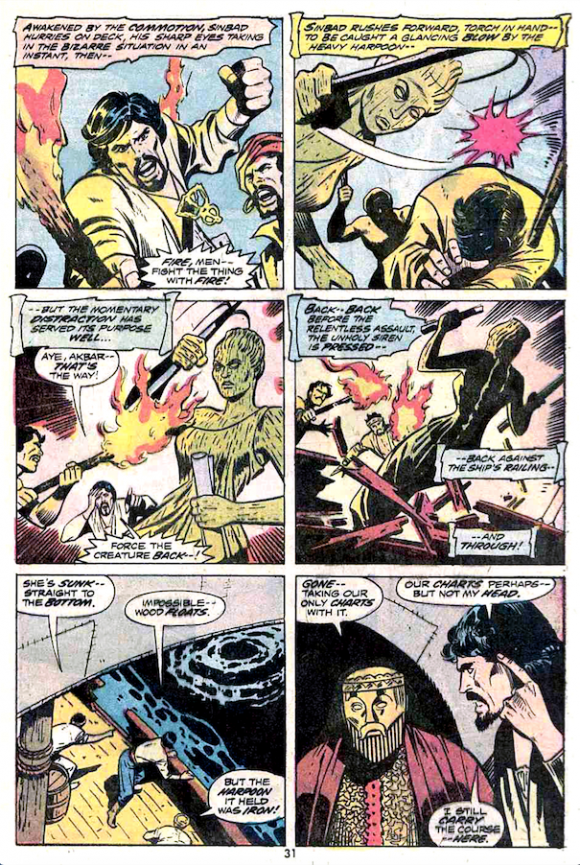
Wein breaks the story just at the right spot, kicking off the second issue with the Oracle scene, probably my favorite of the whole movie, and providing the artists the chance at a great splash page. Tuska’s penciling is solid, with Colletta’s inks ensuring the books were good enough to be printed, but nothing more than that. (It’s too bad Marvel didn’t see fit to give this project to Gil Kane or John Buscema, they would have really sunk their artistic teeth into a story like this).
Margiana isn’t as, er, distinctive in her comic-book form, mainly because a realistic drawing of Caroline Munro probably never would have gotten past the Comics Code (seriously, how any film featuring the ravishing Ms. Munro could ever earn a “G” rating, like Golden Voyage did, is a mystery even the Oracle couldn’t solve).
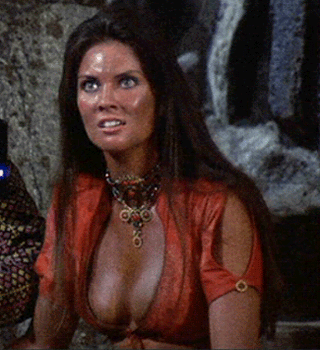
Still, like the movie itself, Marvel’s Worlds Unknown: Golden Voyage of Sinbad is a lot of fun, and worth picking up as back issues (I found them both on eBay for $5, a steal worthy of Prince Koura).
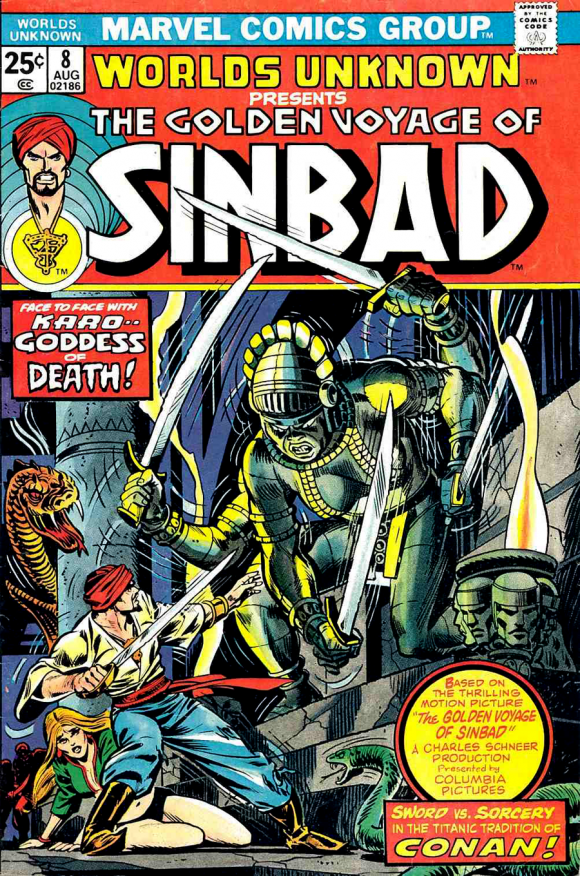
It must be said, compared to modern-day blockbusters, The Golden Voyage of Sinbad moves at a glacial pace. It uses Ray Harryhausen’s painstaking SFX sequences sparingly but, unlike some other films he sprinkled his magic on, it fills the space with good performances, interesting characters, great locations, beautiful colors, and effortless charm to make for a satisfying whole.
If I may play Oracle of All Knowledge for a moment, let me advise anyone who wants to take this journey: It’s well worth it.
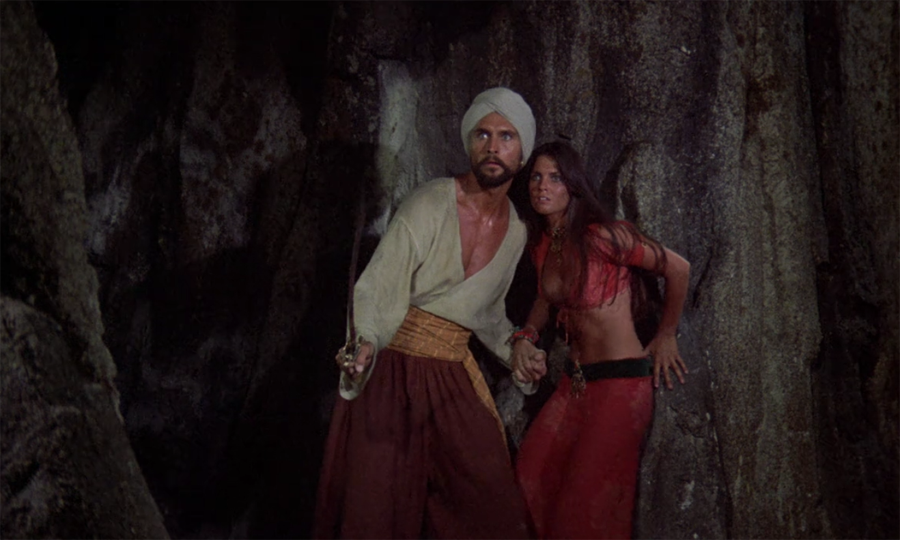
—
MORE
— CAROLINE MUNRO Lifts the Veil on a Cult Fave Career — From HAMMER to SINBAD. Click here.
— CAROLINE MUNRO: The Greatest TALIA That Never Was. Click here.
—
Rob Kelly is a writer/artist/comics and film historian. He is the host or co-host of several shows on The Fire and Water Podcast Network, including Aquaman and Firestorm: The Fire and Water Podcast, The Film and Water Podcast, TreasuryCast, Superman Movie Minute, MASHCast and Pod Dylan.

January 17, 2017
I proposed in FANTASY EMPIRE #1 (July 1981) that Sinbad was the villain, Koura the hero. Evidence abounds – including the clue in the final scene. Just a thought …
January 17, 2020
I READ that article when it was published. Great job!
June 29, 2019
I love those movies!
June 30, 2020
I think I might give those old “Sinbad” comics a try. 🙂